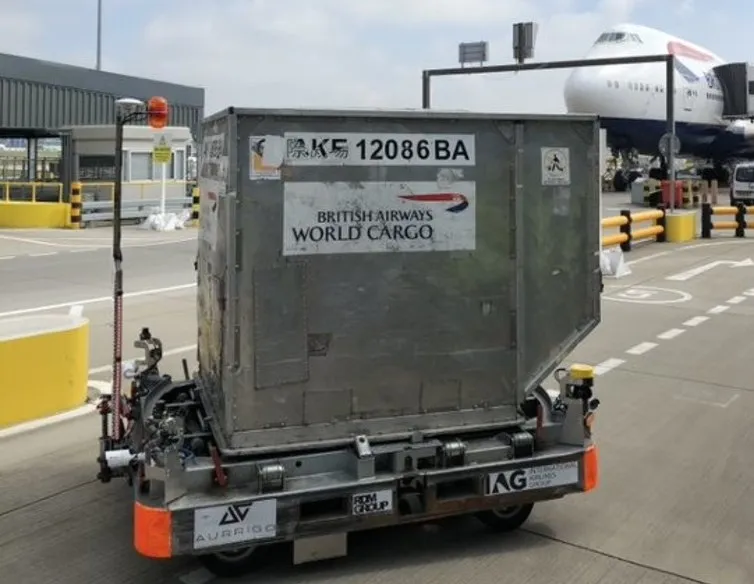
British Airways hopes robot carriers will mean faster bag delivery
Oct 31, 2019

British Airways is exploring the use of robotic carriers to enhance the efficiency of luggage delivery at airports. The airline envisions that these automated systems will streamline the handling process, significantly reducing the time it takes for passengers to receive their bags after landing. By integrating advanced robotics into their operations, British Airways aims to improve the overall travel experience, minimize delays, and ensure a smoother transition from the aircraft to baggage claim. This innovative approach reflects the airline's commitment to leveraging technology for operational excellence and customer satisfaction.
Introduction to British Airways' Robot Carriers
British Airways is exploring innovative solutions to enhance its baggage handling operations. One of the most exciting developments is the introduction of robot carriers, which promise to revolutionize the way luggage is transported from the aircraft to baggage claim. With the aim of achieving faster bag delivery, these robots could significantly improve the overall passenger experience.
Understanding the Benefits of Robot Carriers
The implementation of robot carriers offers several benefits that can streamline the process of baggage handling. Some of the most significant advantages include:
- Increased Efficiency: Robot carriers can operate continuously without breaks, which means that bag delivery can happen more quickly.
- Reduced Human Error: Automation minimizes the risk of mistakes during the luggage transfer process, ensuring that bags are delivered to the right destination.
- Cost Savings: By reducing the reliance on manual labor, British Airways can cut operational costs over time.
How Robot Carriers Work
Robot carriers are designed to operate in the bustling environment of airport terminals. These autonomous vehicles are equipped with advanced navigation systems, allowing them to move seamlessly through crowded spaces. Here's a simplified overview of how they function:
| Step | Description |
|---|---|
| 1 | The robot receives a signal from the aircraft once the baggage is ready for pickup. |
| 2 | Using sensors and cameras, the robot navigates through the terminal to locate the baggage. |
| 3 | Once at the designated area, the robot loads the luggage and proceeds to the baggage claim area. |
| 4 | Upon arrival, the robot deposits the bags for passengers to collect. |
Challenges and Considerations
While the concept of robot carriers is promising, there are challenges that British Airways must address to ensure successful implementation. These include:
- Integration with Existing Systems: Ensuring that robot carriers can seamlessly integrate with current baggage handling systems is vital.
- Safety Protocols: Airports must establish safety measures to prevent accidents involving robots and passengers.
- Public Acceptance: Educating passengers about the technology and its benefits will be crucial for gaining their trust.
Future Prospects for Baggage Handling
As technology continues to evolve, the future of baggage handling looks bright. British Airways is not alone in exploring automation; many airlines are investing in similar innovations. The use of robot carriers could set a new standard in the industry, leading to:
| Future Development | Potential Impact |
|---|---|
| Advanced AI Systems | Enhanced decision-making capabilities for real-time baggage routing. |
| Collaboration with Other Tech Companies | Improved technology sharing and development of more sophisticated robots. |
| Expanded Use of Drones | Possibility of airborne deliveries for connecting flights or remote terminals. |
Conclusion
British Airways is poised to lead the way in transforming baggage delivery through the use of robot carriers. By investing in this cutting-edge technology, the airline hopes to achieve faster bag delivery and enhance the overall travel experience for its passengers. As the aviation industry continues to evolve, the integration of robotics and automation may well become the norm, paving the way for a more efficient and enjoyable journey for travelers worldwide.
```Related Articles

Explore Thailand: The Best Islands to Visit for Paradise, Adventure, and Relaxation

The Ultimate Guide to the Best Islands in Thailand for Your Next Getaway

Do babies need passports? How to get a passport for a newborn

How to get a U.S. passport fast: here’s how to expedite the process

What is Mobile Passport Control: 5 reasons why you should use it

SENTRI vs. Global Entry: A detailed guide

Do you need a passport to go to the Bahamas? Let’s find out

Do you need a passport to go to Mexico? A detailed guide

Do you need a passport to go to Canada? We got the answer

Do You Need a Passport for a Cruise: An Essential Travel Guide

Booster Seat Requirements: All the Rules to Follow in Your Rental Car

What Are the World’s Most Powerful Passports, and How Does Yours Rank?

How to Take a Passport Photo at Home: A Helpful Guide

You've got to have heart! Southwest's new livery

Your opinion: Should water be free on low cost carriers?

Young women bolder than guys as solo travellers
